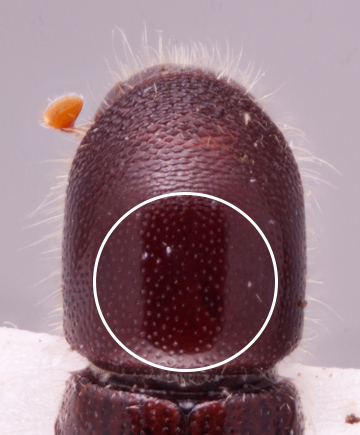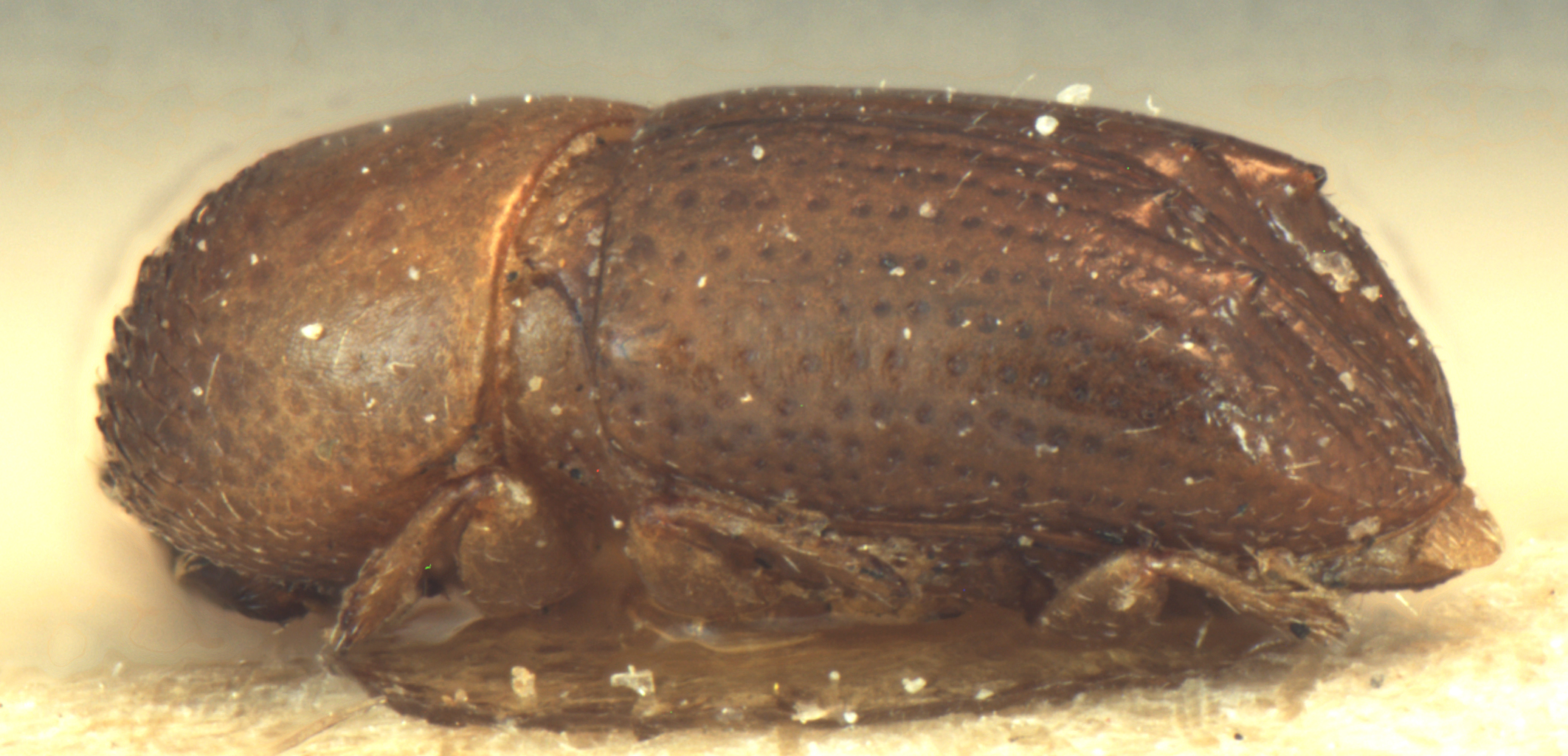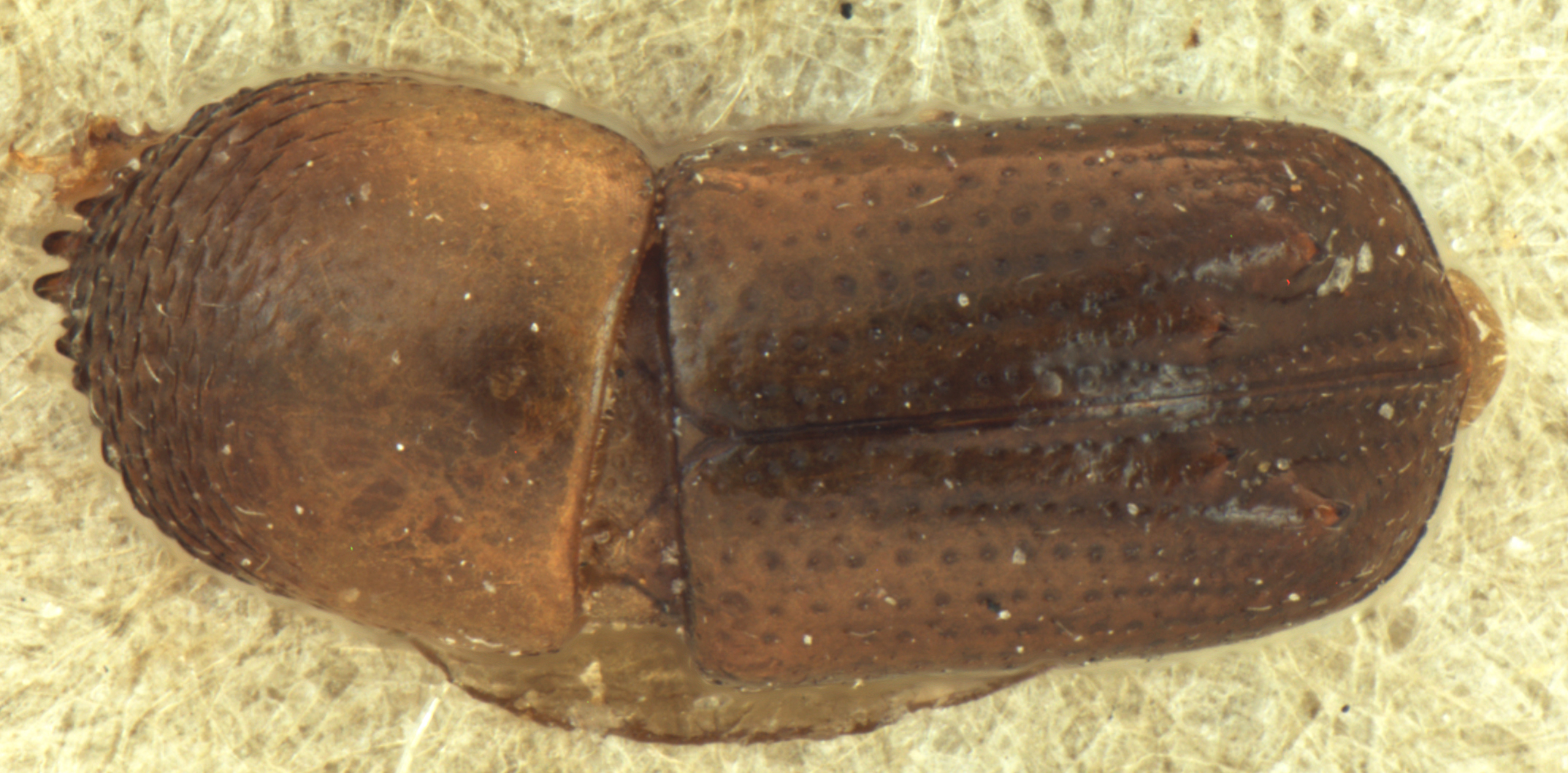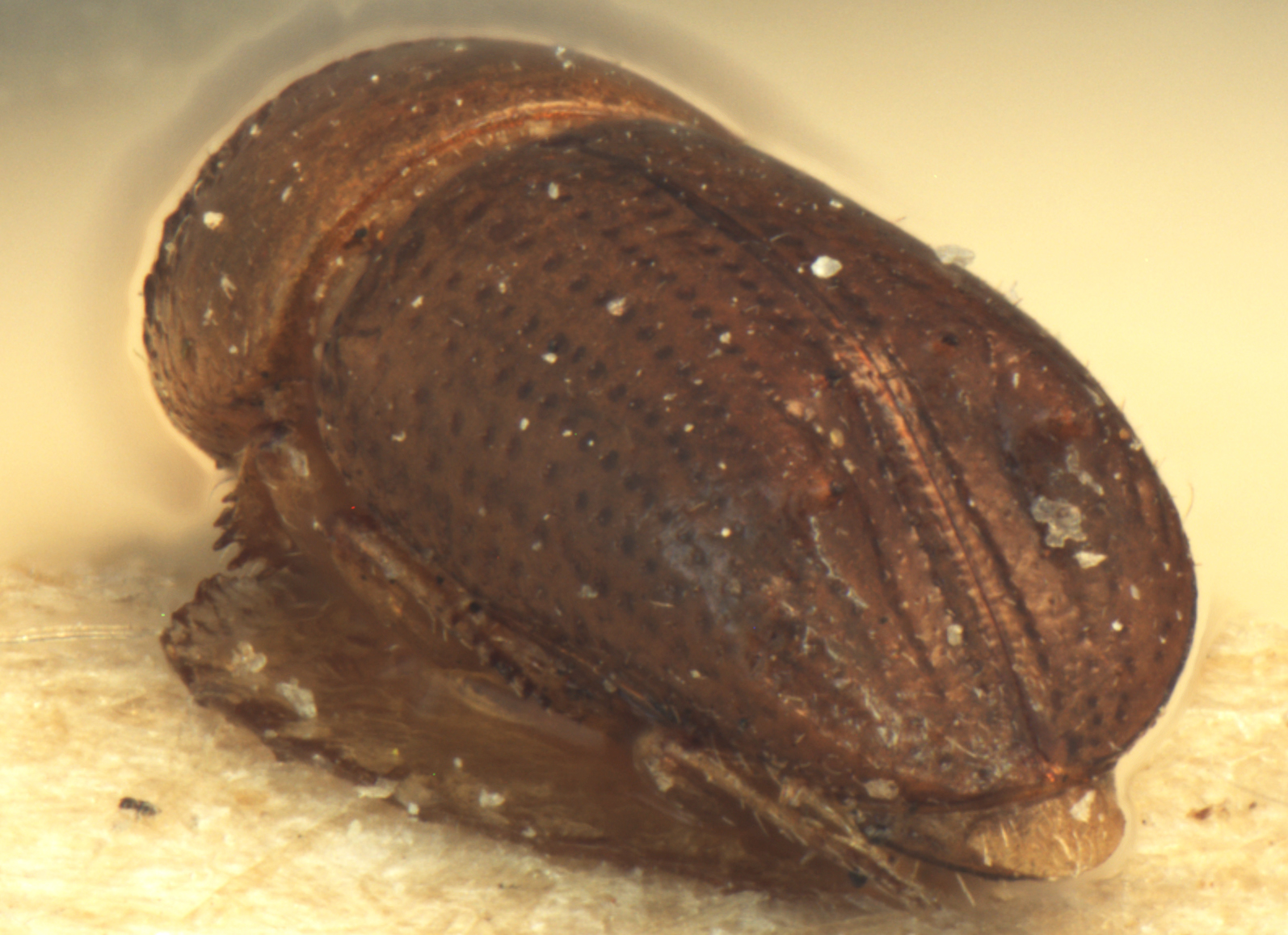Diuncus mucronatulus
|
Diuncus mucronatulus lateral; A.I. Cognato |
|
Diuncus mucronatulus dorsal; A.I. Cognato |
|
Diuncus mucronatulus declivity; A.I. Cognato |
|
Diuncus mucronatulus frontal; A.I. Cognato |
Taxonomic history
Xyleborus mucronatulus Eggers, 1930: 199.
Diuncus mucronatulus (Eggers): Hulcr and Cognato, 2009: 33.
Diagnosis
1.5 mm long; 2.37 times as long as wide. This species can be distinguished by its minute size; pronotumpronotum:
the dorsal surface of the thorax
conical frontally and angulate (type 6) in dorsaldorsal:
of or relating to the upper surface; opposite of ventral
 view; pronotalpronotal:
view; pronotalpronotal:
pertaining to the pronotum
summit at anterioranterior:
the front or forward; opposite of posterior 3/8, basalbase:
3/8, basalbase:
point or edge closest to the body; opposite of apex 5/8 punctatepunctate:
5/8 punctatepunctate:
set with fine impressed points, appearing as pin pricks
 ; elytralelytral:
; elytralelytral:
pertaining to the elytra
summit armed by two pairs of large denticlesdenticle:
a small tooth, the sides of which are equal and the tip is above the middle of the base , one pair on interstriaeinterstria:
, one pair on interstriaeinterstria:
longitudinal spaces along the elytra between the striae, which is not as<br />
impressed and bear smaller punctures.
 2, the other on interstriaeinterstria:
2, the other on interstriaeinterstria:
longitudinal spaces along the elytra between the striae, which is not as<br />
impressed and bear smaller punctures.
 3; pronotumpronotum:
3; pronotumpronotum:
the dorsal surface of the thorax
as long as wide; declivitydeclivity:
downward slope of either the pronotum or elytra
 appearing weakly bisulcatebisulcate:
appearing weakly bisulcatebisulcate:
pertaining to an elytral declivity with two suci; a sulcus present on each elytron but the suture remains convex
; and interstriaeinterstria:
longitudinal spaces along the elytra between the striae, which is not as<br />
impressed and bear smaller punctures.
 1, 3−6 flat to weakly convexconvex:
1, 3−6 flat to weakly convexconvex:
appearing rounded giving the declivitydeclivity:
giving the declivitydeclivity:
downward slope of either the pronotum or elytra
 a finely sculptured appearance.
a finely sculptured appearance.
May be confused with
Diuncus haberkorni, D. mucronatus, and D. quadrispinulosus
Distribution
India (West Bengal).
Host plants
recorded only from Mesua (Calophyllaceae) (Beeson 1930Beeson 1930:
Beeson CFC. 1930. The biology of the genus Xyleborus , with more new species. Indian Forest Records 14: 209-272.)
Remarks
The species was found associated with Xylosandrus mesuae (Eggers) (Beeson 1930Beeson 1930:
Beeson CFC. 1930. The biology of the genus Xyleborus , with more new species. Indian Forest Records 14: 209-272.).
DNA data
specimens not available for sequencing





